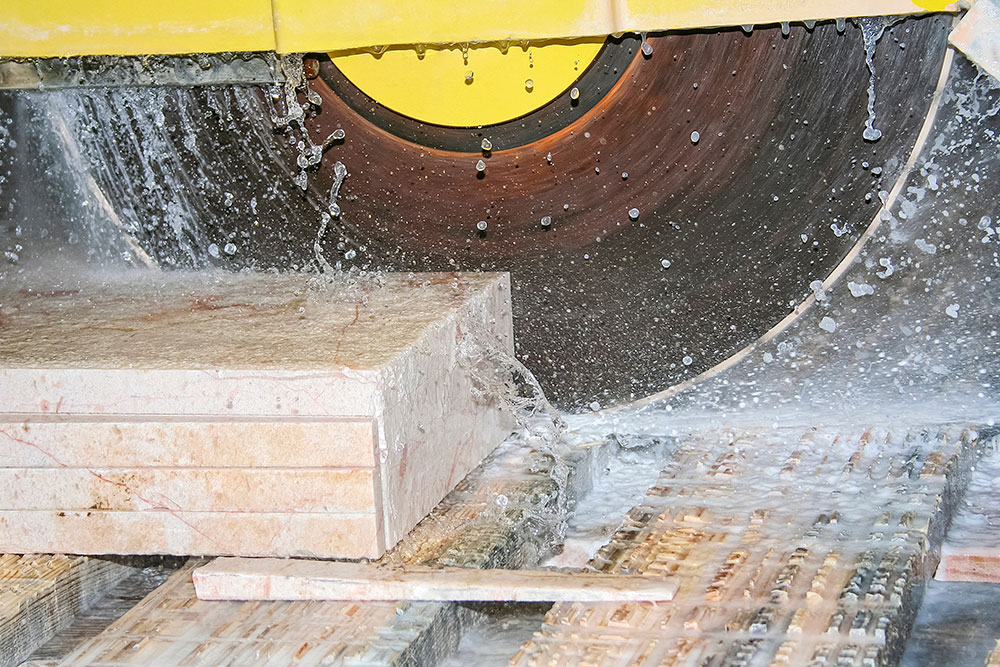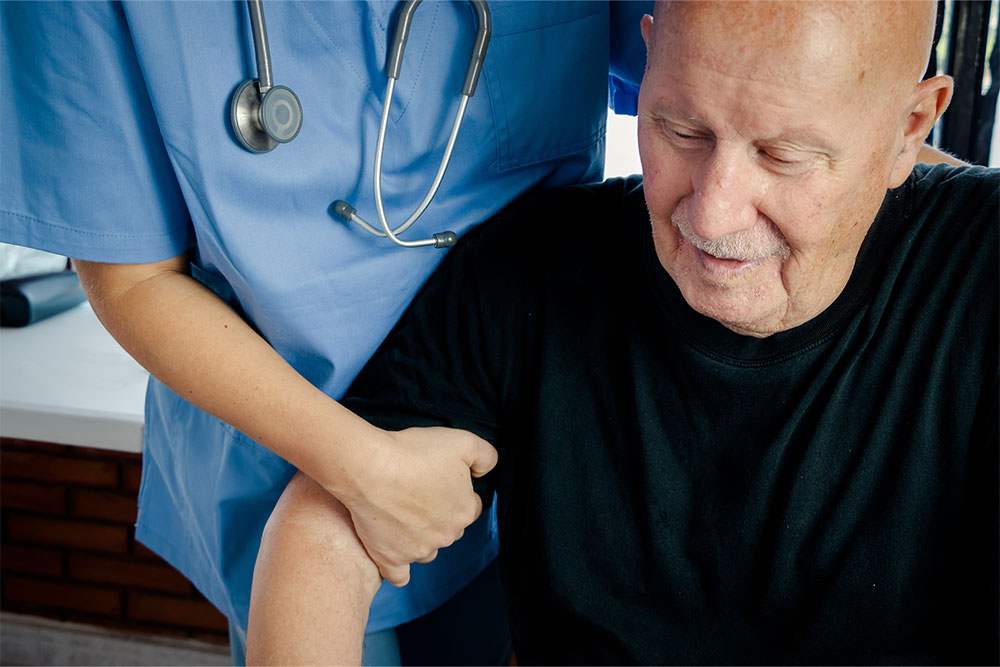
Silica dust is a recognised health risk under the Control of Substances Hazardous to Health Regulations (COSHH).
To protect workers, COSHH sets UK silica dust exposure limits. Exceeding these limits puts workers at risk and leaves employers liable.
This guide explains the silica dust exposure limits workplaces must adhere to. It also outlines how to measure and manage silica dust levels to ensure safety and compliance.
Key Takeaways
- The workplace exposure limit (WEL) for respirable crystalline silica dust in the UK is set at 0.1 mg/m³, averaged over an 8-hour day.
- Employers must monitor silica dust exposure and implement controls to keep levels as far below the WEL as possible.
- Elimination is the preferred control method, followed by engineering controls, safe systems of work and respiratory protective equipment.
- Effective silica dust management helps protect workers from severe lung diseases, including silicosis and lung cancer.
Silica Dust Exposure Risks
Silica is a naturally occurring mineral found in most rocks, sand and clay, which means it’s also found in most construction materials.
Cutting, grinding, drilling or processing silica-containing materials releases respirable crystalline silica (RCS) into the air.
RCS particles are a hundred times smaller than a grain of sand, making them invisible and easy to inhale. When inhaled, RCS particles become embedded in the soft tissue lining the lungs. Over time, this causes permanent scarring and lung damage, which is made worse as RCS builds up. Eventually, RCS exposure can cause:
- Silicosis
- Chronic obstructive pulmonary disease
- Lung cancer
Concentrated or regular exposure to silica increases the likelihood of developing these diseases. This risk is why exposure limits are vital.

UK Silica Dust Exposure Limits
Silica dust exposure is controlled by the Control of Substances Hazardous to Health Regulations (COSHH).
Under COSHH, the workplace exposure limit (WEL) for respirable crystalline silica dust is set at 0.1 mg/m³ as an 8-hour time-weighted average (TWA).
Time-weighted average refers to the average level of exposure over a specific period, in this case, a typical 8-hour workday. So, a worker could be exposed to higher levels of RCS for a shorter time but still be within the WEL.
However, brief exposure to higher concentrations of silica dust can still be harmful. While there’s no set short-term silica dust exposure limit, you can use a guideline of three times the WEL (0.3 mg/m³) averaged over a 15-minute period.
It must be noted that the WEL is the absolute upper limit of what’s considered safe. In other countries, silica dust exposure levels are much lower. In the US, for example, permissible exposure levels are half of what they are in the UK at 0.05 mg/m³.
So, staying at or just below the WEL isn’t a guarantee of safety. It’s much better for workers if you keep as far below the legal limit as possible.
Silica Dust Awareness Training
Silica Dust Awareness Training explains the health effects of silica dust exposure and how to stay safe when working with silica-containing products. It provides workers at risk of exposure with an awareness of silica dust hazards and controls.
Other Silica Dust Exposure Limits
Silica dust can also be amorphous, which is less hazardous than crystalline RCS. Because of this difference, the WEL for amorphous dust is higher at 6 mg/m³ over an 8-hour TWA.
Other forms of silica dust have different exposure limits. The full list of WELs for all hazardous substances can be found in EH40/2005: Workplace Exposure Limits.
Measuring Exposure Levels
Under Regulation 10 of COSHH, employers must monitor exposure levels to ensure they remain within the WEL.
Air monitoring is the most commonly used method. Samples can be taken from a worker’s breathing zone (personal sampling) to estimate individual exposure or from static samplers around the workplace for a general assessment. Only competent people can be trusted to take and analyse these samples.
Other Silica Dust Regulations
COSHH establishes the silica dust exposure limit in the UK, but it is a limit. To comply, you must act to minimise exposure, with risk assessment as the first and most important duty. This assessment should identify the hazardous substances in your workplace and plan how to control them.
Similar to other regulations, COSHH ranks eliminating silica hazards as the best control measure. Removing silica-containing products from your workplace entirely cancels out any risk of inhaling RCS. You could also change work processes to prevent RCS from being released. For example, using pre-cut materials removes the need to cut silica-containing materials on-site.
Of course, elimination is impractical for most workplaces (the average construction project won’t get off the ground without silica-containing materials).
So, where elimination isn’t possible, employers must work through the hierarchy of controls to find the safest solutions. In order, you must:
- Apply engineering controls
- Implement safe systems of work
- Provide respiratory protective equipment (RPE)
Below, we’ve illustrated how each of these control measures might work for silica dust exposure.
Managing Exposure Levels
Engineering Controls
Engineering controls are physical changes to the workplace or work process that reduce RCS exposure risks. Examples include:
- Using water suppression: Applying water when cutting or processing silica-containing materials dampens dust clouds.
- Using low-energy work equipment: Reducing the amount of energy used to process silica-containing materials reduces the amount of RCS released.
- Installing local exhaust ventilation (LEV): Extracting silica dust at the source using LEV.

Safe Systems of Work
Safe systems of work (SSWs) are standard procedures designed to minimise risks. How you make work safe depends on your operations, but good housekeeping is a universal SSW.
Work areas and equipment should be cleaned regularly to prevent silica dust build-up. Cleaning can also complement other control measures.
For example, water suppression will stop RCS from being released into the air. But those dust particles will eventually dry out and settle around the work area, where they’re at risk of being disturbed and re-released into the atmosphere. You can avoid this by cleaning work areas after water suppression has been used.
Respiratory Protective Equipment
Respiratory protective equipment (RPE) is the lowest-ranked control measure, but it’s still vital to prevent silica dust exposure.
Appropriate and properly fitted RPE will prevent a worker from inhaling RCS. But RPE can’t be used on its own. It’s the last line of defence after all other reasonable control measures have been implemented.
Silica Dust Training for Duty Holders
Employers and duty holders need the right training to effectively manage exposure levels and meet all silica dust legal requirements.
Our online Silica Dust for Duty Holders Training course provides the essential knowledge needed to protect workers and ensure compliance with COSHH. This multi-module course covers key aspects of managing exposure, including assessing risks and implementing control measures.





















